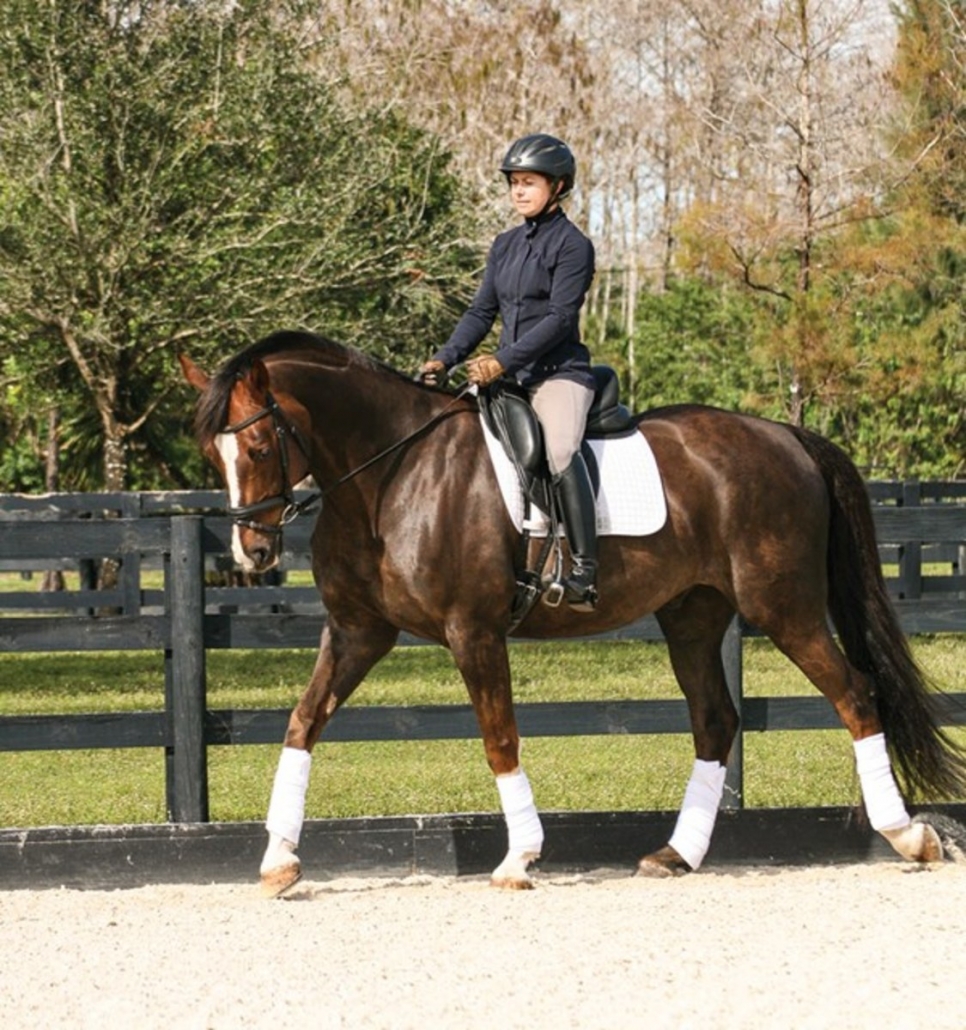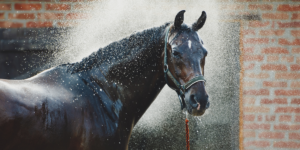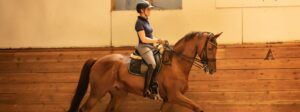A training schedule for your horse: tips and common mistakes
We are actually kind of a ‘personal trainer’ for our horse.
The only difference is that, to become a personal trainer, you normally have to educate yourself with an official study, where you learn how you can train someone in a sustainable way.
But how do we riders learn that?
Where do we learn what a good training schedule looks like?
What kind of training there is and what they do with the body of a horse?
We also decide for our horse how tough the training is, what kind of training it is and how often we execute it.
And that can have big consequences for their health.
The training might get your horse fitter, but if we make the wrong choises, it can also cause injuries.
Luckily there is more and more scientific research about this topic and that means that there’s also more known about more effective ways of training and what the training does to the body of a horse.
Lori Warren, who got a PhD at the University of Kentucky, has listed some of the most important results from those researches.
We also decide for our horse how tough the training is, what kind of training it is and how often we execute it. And that can have big consequences for their health.
Five processes you have to take in consideration
When we talk about training, on the one side we mean the teaching of exercises and different aids.
On the other side we talk about physical training, where your horse gets stronger and more flexibility and where you work on his entire fitness.
During the physical training, there are five processes in the body of your horse that determine the fitness. Some processes only take more time than other ones and that can cause injuries.
These are the five processes:
1. Capacity to bring oxygen to the muscles;
2. Capacity to use oxygen and to handle the energy consumption in an efficient way;
3. Support of the bones, ligaments, tendons and muscles;
4. Regulation of the body temperature; and the
5. Coordination (nervous system).
Quick improvement in the processes 1 and 2: efficient use of oxygen
When you start with the training, there will quickly be an improvement of the first two processes, which can be measured with VO2max, also know as the maximum oxygen uptake
VO2max is measured with scientific researches, for example to test the effectivity of different types of training. But it’s also measured with professional athletes.
A high VO2max means that your horse can better handle the asked exercise during the training. But how quickly does the VO2max improve?
Research shows that the VO2max improves the most during the first weeks that your horse is in training.
A research with English thoroughbreds shows that in only ten days, there was already an increasement of the VO2max of 9 procent.
Even if you train your horse for a longer time, it shows that the most improvement comes within the first six to eight weeks.
It seems like your horse can handle it, but the supporting parts aren’t strong enough.
Remarkably enough, the intensity of the training isn’t really important for the increase of the VO2max.
Two groups of horses were trained with different intensities. One group did mostly work in trot and the other group did more intensive work in canter.
Still, the improvement in the VO2max in both groups was the same. Of course has the harder training more effect on the other processes in the body.
Process 3, support of the bones, ligaments, tendons and muscles, takes a lot longer
As you might expect, the improvement of the strength and/or length of the bones, ligaments, tendons and muscles does take a lot longer, four to six months.
So it might be that the fitness is already really improved and that your horse, based on that, is able to handle a heavier workout, but the supporting parts of the body still can’t handle that amount of training and the risk of injuries increases.
And that is of course the point where it often goes wrong.
It seems like your horse can handle it, but the supporting parts aren’t strong enough.
Unfortunately this is very hard for us to monitor. But realize that it might take four to six months and that checking the legs on a daily basis can prevent overloading.
Besides that it is also good to realize that the older the horse is, the longer it takes before the supporting parts are strong enough.
Try, evaluate and adjust
The results from the researches can give us guidelines for the training schedule that we are creating for our horse. But we always have remember that every horse is different and that we need to create a seperate training schedule each individual horse.
And as a personal trainer of your horse does that mean you have to try, evaluate, adjust and try again, untill you know what fits your horse.
Good luck!




